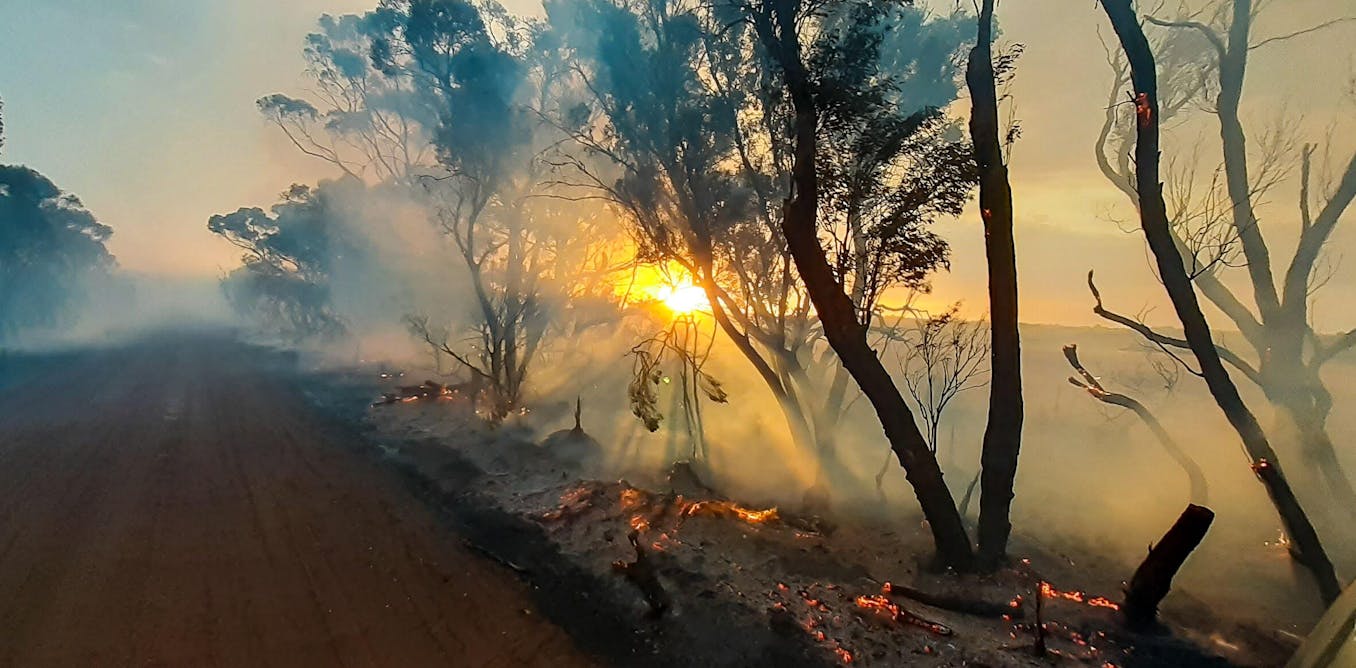Unveiling the Risks: Why Every Property Owner Needs a Bushfire Risk Assessment
Unveiling the Risks: Why Every Property Owner Needs a Bushfire Risk Assessment
Blog Article
Crucial Tips for Bushfire Management to Make Sure Fire Defense

Understanding Bushfire Danger Degrees
Understanding the varying levels of bushfire risk is necessary for efficient planning and prep work in mitigating potential dangers to homes and lives. Bushfire danger degrees are typically categorized based upon variables such as climate conditions, gas schedule, topography, and historical fire actions. By comprehending these danger people, communities and degrees can proactively carry out techniques to minimize susceptability and enhance durability despite possible bushfire occasions.
The first degree of bushfire danger is low danger, where the probability of a bushfire occurring and triggering significant damage is very little. This level frequently happens during durations of reduced temperature levels, modest moisture, and minimal wind rates. Modest risk degrees indicate a boosted capacity for bushfires due to rising weather conditions or fuel schedule. High-risk levels symbolize a considerable risk, with problems helpful to quick fire spread and extreme fire behavior. Extreme danger degrees are one of the most crucial, positioning impending threat to lives and homes as a result of extreme weather and extremely combustible fuels.
Recognizing these bushfire threat levels enables stakeholders to customize their preparedness and feedback activities appropriately, ensuring a aggressive and effective approach to bushfire monitoring.
Creating a Defensible Area
Effective bushfire administration starts with developing a defensible room around residential or commercial properties to boost security against possible fire threats. A defensible room is a buffer zone that produces an obstacle in between a structure and the bordering flammable plant life. This area functions as a critical line of defense, giving firefighters a risk-free area to run and assisting to reduce the risk of a fire spreading to the home.
When creating a defensible area, it is necessary to consider the layout of the residential property and the bordering landscape. Cleaning greenery, particularly extremely flammable plants, within a particular span of the residential property can aid avoid the quick spread of fires. Additionally, keeping a well-irrigated area around the property can even more improve its defensibility.
Normal maintenance of the defensible space is critical to guarantee its efficiency. This includes cutting looming branches, removing dead plants, and maintaining the area without debris. By investing time and initiative right into establishing and keeping a defensible area, homeowner can significantly improve their chances of protecting their homes and assets throughout a bushfire.
Applying Fireproof Landscaping
When developing landscapes to reduce the threat of bushfires, integrating fireproof aspects is crucial for improving building defense and lowering fire threats. Select plants with high dampness content, reduced oil web content, and marginal dead greenery to decrease the threat of fire spread.

Developing an Emergency Situation Emptying Strategy
Establishing an extensive emergency evacuation plan is essential for guaranteeing the find more safety and security and wellness of individuals during possible bushfire cases (BMP). A reliable emptying plan need to lay out clear treatments to follow in case of a bushfire risk, including marked emptying courses, assembly factors, and communication methods
To start producing an emergency situation discharge plan, it is important to assess the certain dangers and vulnerabilities of your area. Identify numerous emptying paths that bring about safe locations far from the fire, thinking about factors such as surface, roadway access, and prospective dangers. Develop communication networks to sharp homeowners of an approaching discharge, using techniques such as alarms, text signals, or door-to-door notifications.
Consistently review and practice the discharge strategy with all locals or community participants to make sure every person comprehends their roles and obligations. Conduct drills to test the efficiency of the plan and make any kind of essential adjustments. By having a well-prepared emptying plan in position, you can enhance the chances of a secure and organized emptying during a bushfire emergency.
Keeping Fire Safety And Security Devices
After developing a detailed emergency situation discharge prepare for bushfire incidents, it is critical to focus on the regular upkeep of fire security tools to make certain optimal performance and preparedness. Normal maintenance of fire safety equipment such as fire extinguishers, smoke detectors, fire alarms, and automatic sprinkler is vital in guarding lives and residential property throughout a bushfire. Performing routine examinations, testing, and maintenance of these tools by qualified professionals is vital to assure they remain in functioning order when required.
Fire extinguishers should be examined consistently for pressure degrees, visible damages, and appropriate performance. By faithfully keeping fire security tools, individuals can enhance their preparedness and feedback abilities in the event of a bushfire.
Verdict
To conclude, reliable bushfire management entails understanding risk levels, developing defensible areas, executing fire-resistant landscaping, establishing emptying plans, and maintaining fire safety and security devices. By following these important tips, individuals can make sure far better fire protection and security for their neighborhoods and residential properties. It is essential to focus on aggressive actions to alleviate the threats related to bushfires and to be prepared for emergencies.
By comprehending the subtleties of bushfire threat levels, establishing defensible areas, carrying out fireproof landscape design, developing comprehensive emptying plans, and guaranteeing the maintenance of fire safety equipment, individuals and communities can significantly strengthen their durability versus the devastations of wildfires - BMP. These ideas are not only critical for guarding against instant fire threats however likewise for cultivating lasting fire protection strategies that can make a substantial difference in the face of intensifying bushfire hazards
High-risk levels signify a substantial Web Site danger, with problems conducive to fast fire spread and severe fire behavior. Normal maintenance of fire safety tools such as fire extinguishers, smoke read the article detectors, fire alarm systems, and lawn sprinkler systems is critical in safeguarding lives and residential property during a bushfire.In final thought, reliable bushfire management includes comprehending threat degrees, developing defensible spaces, carrying out fire-resistant landscape design, creating discharge plans, and preserving fire security devices.
Report this page